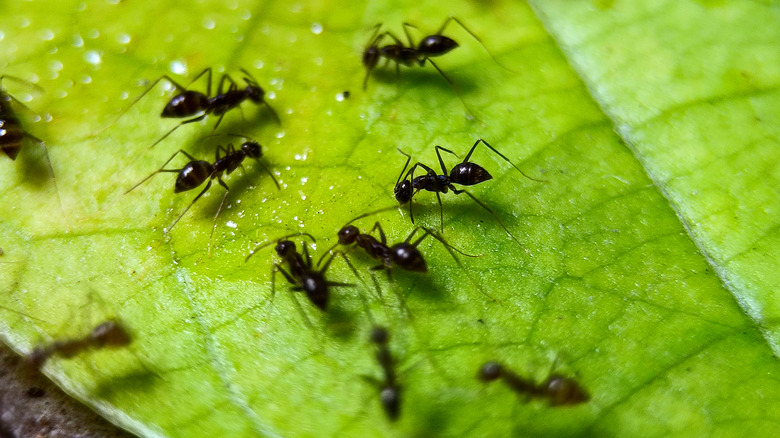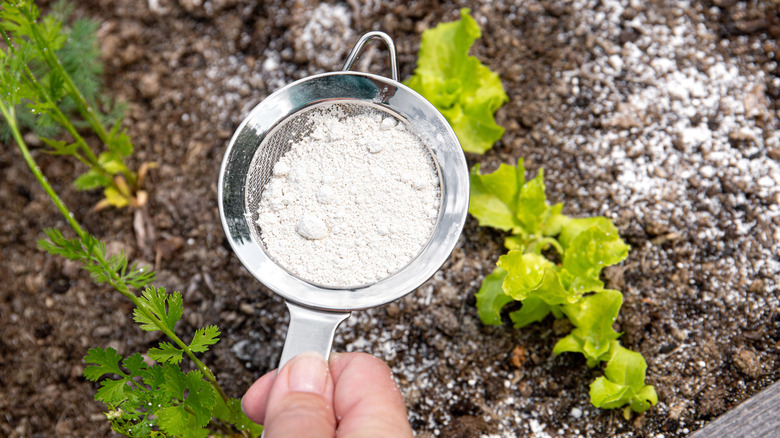Stop Ants From Taking Over With A Garden Staple You Can Rely On
We may receive a commission on purchases made from links.
If you've been finding more ants than flowers in your garden lately, fear not. There are plenty of options for keeping them out of your garden beds. One tried and true way is to sprinkle some diatomaceous earth near where you've seen the pests. In the right conditions, you'll have a safe, economical, and environmentally friendly way deal with them.
Of course, before you target all the ants in the garden, just remember that some of them are beneficial. Ants can eat pests, but also help aerate the soil. By dragging dead bugs or decomposing plants into their homes underground, they can help fertilize the soil as well. But if you feel like you have too much of a good thing, working to get rid of ants in the garden in a safe way is a good move.
Diatomaceous earth is basically the fossilized remains of diatoms, microscopic organisms that once lived in water. These fossils can be 20 million years old! Diatomaceous earth, commonly found as a chalky white substance, naturally occurs in pockets around the world. It kills ants or slugs by cutting open the waxy coating many insects have on their exoskeleton , which causes them to eventually dry out. This kills individual insects that crawl through it, not the whole colony. The powder works on a number of insects, including ants, silverfish, cockroaches, and bed bugs. But diatomaceous earth isn't just for killing bugs. It's also used to make paint and filtration systems and as an abrasive.
Here's how to use diatomaceous earth to kill ants
You don't have to go on an archaeological expedition to excavate your own pocket of diatomaceous earth. You can buy ready made powder like Garden Safe Brand Crawling Insect Killer Containing Diatomaceous Earth. While diatomaceous earth isn't poisonous to humans, it can irritate skin or eyes, so always wear gloves and protective eye gear when sprinkling it around. It's a good idea to follow the directions on the package to be safe, too.
In general, you want to sprinkle the powder in a thin layer where you've seen ants the most. If you've had problems with ants coming inside the house, you can also sprinkle the powder around the outside of the home to discourage them from entering. It usually works in a day or two. Know that ants will avoid diatomaceous earth if they can, but it also doesn't work when it's wet. You'll have to reapply it after watering or rain, and humidity can lower the effectiveness of it. Feel free to try it along with other organic repellents. For example, you can keep ants out of the garden with a fresh scent they won't go near.
Even as you're fighting ants, you may want to keep some of them around. A large influx of them might be a sign of another problem, such as a huge population of aphids or mealybugs that they've come to feed on. If you do away with the ants, you might find yourself scrambling to figure out how to kill aphids on flowers instead.

